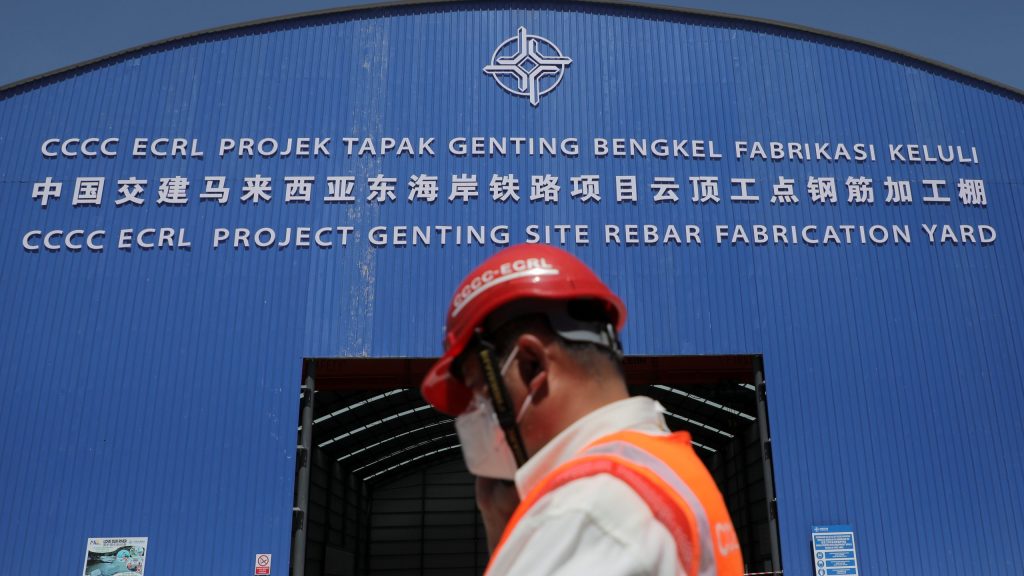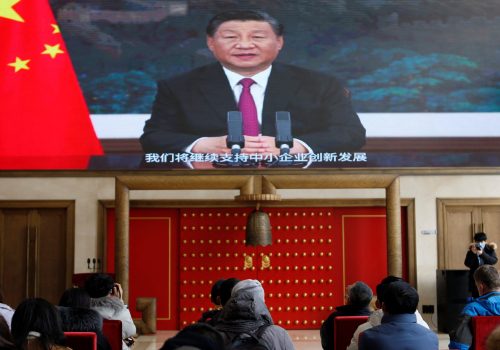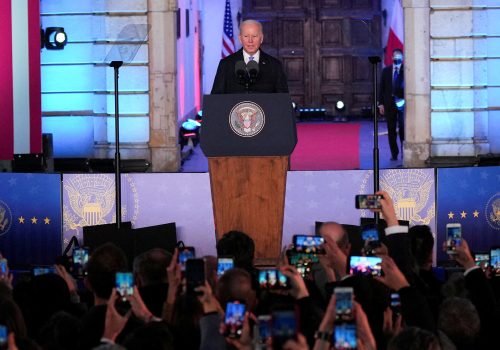While serving as a senior official in the US State Department and Export-Import Bank of the United States (EXIM), I visited key leaders across the world’s developing countries as part of multi-agency economic missions to support US business interests and investment abroad. At almost every stop, our delegation was greeted with much fanfare—yet behind closed doors, the message we heard was clear: China is already here, and the United States is falling behind.
China is projected to surpass the United States as the world’s largest economy by 2028. But relative size is only part of the problem: The Chinese Community Party (CCP) is pursuing an insidious, intentional, and coordinated strategy of economic subversion—a classic form of “hybrid warfare”—that poses an existential threat to US national security. If the United States fails to respond to this threat with its own strategic effort, it risks compromising its global economic and geopolitical leadership.
China’s Belt and Road Initiative (BRI) is the epitome of hybrid warfare. Beijing pursues “debt trap” diplomacy, whereby the CCP showers much-needed financing on poor countries with oppressive terms that force the recipients to forfeit direct or indirect control over key strategic assets (such as a ports, airports, rail lines, and highways) if they fail to repay commercial loans. This pattern is evident across the globe as China buys access to strategic strongholds through infrastructure investments, from Greece’s Piraeus port and Sri Lanka’s Hambantota port, to Zambia’s Kenneth Kaunda International Airport and Djibouti’s Doraleh naval port. Its latest target is Uganda’s Entebbe International Airport.
Beijing’s influence over such strategic assets threatens the free flow of goods, the continuity of supply chains, and access to critical minerals and other resources. Meanwhile, China is further expanding its footprint as the largest creditor in Africa, a continent rich in natural resources and economic opportunity. We can expect China’s pattern of conduct, which is inconsistent with Western values—meaning compromised environmental standards, a disregard for the interests of local indigenous populations, and financial terms that are opaque and oppressive—to continue.
In contrast to the CCP’s deliberate and focused foreign-investment and export-promotion strategy, the US effort in this regard is disjointed, reactive, and plagued by overlapping bureaucratic missions and interagency competition. I witnessed this firsthand when I served in Washington, where one department or agency tries to outdo or undermine another. Attempts to coordinate policy among officials representing varying constituencies are fleeting, with no clear decision maker on top. Some infighting is inevitable—even healthy at times—to arrive at the best policy outcomes. But since the missions and functions associated with US foreign investment, trade promotion, and development finance span so many different agencies, it becomes nearly impossible to unify around one clear strategy.
Even worse, there is widespread confusion both inside and outside of government about where one agency’s mandate begins and another’s ends. For instance, when I met with US economic representatives abroad, they often could not clearly articulate the different capabilities and missions of EXIM, the International Development Finance Corporation (DFC), Millennium Challenge Corporation, International Trade Administration, Trade and Development Agency, US Agency for International Development, and other arms of the US government.
These agencies play complementary yet, at times, overlapping roles in US foreign investment, trade promotion, and development finance. If the US government cannot articulate these differences, how can it expect foreign governments or businesses to understand them? This is not the fault of the people in the field who are doing exemplary work in the face of an onslaught of Chinese competition—but rather a result of an uncoordinated bureaucracy in Washington.
Flexible and unified: A strategy for success
To orchestrate a coordinated economic strategy to counter China, the US goal should not be to emulate or “out-China” China. The United States does not want to win every project or match the CCP’s massive amount of financing (an estimated $18 billion in 2020, or ten times the US spending, for export credit support alone). Nor should the United States lower its business, ethical, or environmental standards to China’s unacceptable level of conduct.
But there are other steps the United States must take to regain its strategic momentum relative to China.
First, the government must adopt more of a private-sector mindset. While Washington should be driven by economic and national-security interests, its approach should be more akin to how businesses win new contracts: identify what customers need, develop solutions to meet those needs, and then clearly communicate the solutions to the marketplace. Too often, we find ourselves learning about projects well after China is already engaged, then being asked to provide an alternative under a short deadline that our bureaucracy simply cannot support. The United States needs to be proactive on important projects and transactions, instead of primarily reacting to Beijing’s moves.
Second, the United States needs better coordination and consistent policies among agencies to facilitate more compelling and faster proposals to foreign parties. Currently, each US government entity has its own mission and parameters, but by working together, they can offer a more comprehensive solution to foreign countries and businesses purchasing US goods and services. To make it easier on foreign counterparties, US agencies should offer joint financing and terms: For example, start with a simple one-page term sheet, as Under Secretary of State Keith Krach (my former boss and a renowned tech executive from Silicon Valley) used to tell me frequently. Teams in the field should be educated on all US agencies’ capabilities and then work together to provide the best integrated solution.
Third and perhaps most important, even if we fix the issues in the field, nothing will dramatically change unless we reform Washington. The United States needs more unified leadership in Washington to guide the efforts of the disparate agencies involved in US foreign investment, trade promotion, and development finance. This should involve some type of overarching coordinating authority focused on challenging China’s growing global economic influence—either at the National Security Council or a similar institution that is adept at policy coordination.
An even bolder move would be to formally consolidate the relevant agencies into one body that can combat Chinese economic aggression and meet other challenges in a more effective and efficient manner. This would require congressional action and could trigger turf battles in the executive branch—but it can be done. The Better Utilization of Investments Leading to Development (BUILD) Act, which reorganized and revamped the Overseas Private Investment Corporation to create the DFC, serves as a good model for success. Passed with bipartisan support by Congress in 2018, the BUILD Act established a better funded, more flexible, and expanded US development finance agency primarily to take on China.
These steps can help the United States stem the long-term global economic influence of China. After all, foreign governments and businesses want to do business with the United States; they often just don’t know how. Washington must make it easier for them.
David Fogel is a member of the Atlantic Council’s Gray Zone Task Force, housed in the Scowcroft Center’s Forward Defense practice. He served as chief of staff at the Export-Import Bank of the United States (2019-2020) and as senior advisor to the Under Secretary of State for Economic Growth, Energy, and the Environment (2020-2021).
Further reading
Wed, Feb 23, 2022
Today’s wars are fought in the ‘gray zone.’ Here’s everything you need to know about it.
Hybrid Conflict Project By
Our experts help illuminate this shadowy zone of strategic competition—and offer ways for Washington and its allies to begin seizing the advantage.
Tue, Feb 8, 2022
US adversaries have been mastering hybrid warfare. It’s time to catch up.
Hybrid Conflict Project By Marc Polymeropoulos, Arun Iyer
Bad actors are embracing hybrid warfare. Time is of the essence for Washington to seize the advantage.
Fri, Apr 1, 2022
Biden has laid out a new vision for democracies to succeed. Here’s how to implement it.
New Atlanticist By Ash Jain
Winning the struggle against autocracy won't be easy. But unless the world’s leading democracies are strategically aligned and committed to act in the long term, success may prove elusive.
Image: A worker is pictured at the construction site of East Coast Rail Link, a Chinese-invested railway project in Bentong, Malaysia, on January 13, 2022. Photo by Hasnoor Hussain/REUTERS



